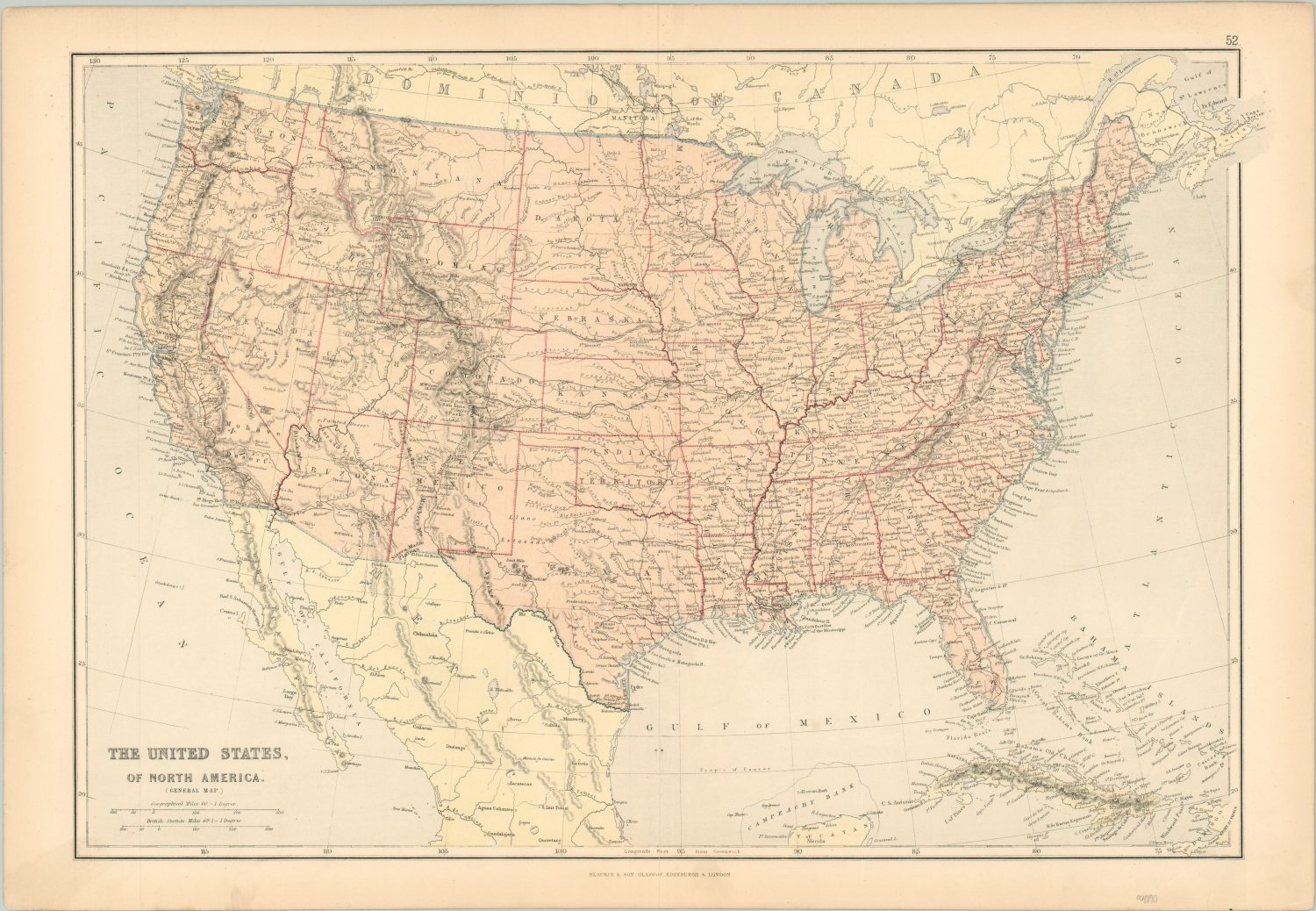When one gazes upon a map of the United States within the broader context of North America, a certain genesis of understanding arises. At first glance, the familiar outlines and borders delineate territories known, yet it is the sheer complexity of the interactions depicted on this cartographic canvas that invites deeper contemplation. This geographical representation not only serves as a navigational tool but also encapsulates the intertwined fates of ecosystems, communities, and climates across the continent.
The United States, a nation often epitomized by its sprawling landscapes and diverse climates, occupies a consequential locus in North America. Stretching from the frigid tundras of Alaska to the balmy skies of Florida, the geographical diversity itself is a microcosm of the environmental variances impacting climate dynamics. By studying a map that encapsulates the entirety of North America, one can begin to appreciate the magnitude of climatic changes affecting the entirety of this landmass. The interweek with our neighbors to the north and south, Canada and Mexico, respectively, bears implications not only for trade and politics but also for environmental stewardship and conservation efforts.
What, then, does the map of the United States in the context of North America reveal about our environmental responsibilities? To comprehend this, it is essential to understand the geographical features that delineate our relationship with nature. The Rocky Mountains, which traverse the western expanse, act as a climatic barrier, influencing weather patterns and ecological systems both west and east of the range. Meanwhile, the coastal plains present a juxtaposition of habitat loss due to urban development and the impacts of rising sea levels caused by climate change.
The rivers and lakes depicted on such a map serve as arteries for life. The Mississippi River, one of North America’s most significant waterways, nourishes vast agricultural landscapes while simultaneously acting as a corridor for wildlife migration. Conversely, these crucial waterways are threatened by pollution, habitat destruction, and climate-induced fluctuations in flow rates. Herein lies the intriguing paradox: while the geographical features foster a sense of interconnectedness and interdependence, human actions often engender fragmentation and degradation of these vital ecosystems.
Moreover, a map elucidates not only the geographical but also the socio-political dimensions of environmental policy. Varying regulations across states can create a patchwork of environmental protections that hinder cohesive action against climate change. A state-by-state analysis as represented on a united states map lays bare disparities in how initiatives like renewable energy utilization and greenhouse gas reductions are approached. Understanding this mosaic of policy-making is essential for fostering regional collaborations aimed at enhancing climate resilience.
Equally captivating is the role that indigenous populations play within this geographical discourse. A map of the continent is incomplete without acknowledging the traditional territories of Native American tribes, who have engaged in sustainable practices for centuries. Their stewardship of the land, forests, and waters provides invaluable insights into sustainable living that are often overlooked in contemporary environmental strategies. The incorporation of these indigenous perspectives enriches the broader narrative of land use and conservation, emphasizing the need to harmonize modern environmental policies with traditional ecological knowledge.
As one examines the contours of this map, the question persistently arises: how can the juxtaposition of natural wonders and governmental boundaries cultivate a more profound understanding of climate change? The answer lies in harnessing curiosity and encouraging exploration. Each state comprises a unique ecological tapestry, interlaced with the stories of its communities and the challenges they face. The Grand Canyon, the Everglades, the Great Lakes—all represent not only breathtaking landscapes but also ecosystems under threat from climate change. Mapping these features beckons curiosity about their preservation and the urgent call for action to protect them.
Navigating through the American landscape presented in a map serves as an invitation to explore the intersection of humanity and nature. The juxtaposition of urban environments against natural wonders prompts reflections on sustainable urban planning and the preservation of biodiversity. The sprawling cities, often identified as the epicenters of economic growth, paradoxically contribute to ecological degradation. By contrasting urbanized zones with national parks, forests, and wildlife refuges on the map, one becomes acutely aware of the imperative to recalibrate our relationship with nature.
In consideration of climatic shifts caused by anthropogenic activities, the significance of cross-border cooperation emerges as a paramount discourse. North America, represented in its entirety on a map, unveils the interconnected climatic challenges that do not adhere to political boundaries. Air and water pollution, climate migration, and species extinction are not contained within state lines; thus, a collaborative approach is essential to foster a sustainable future for all inhabitants of the continent.
Ultimately, the map of the United States within the North American context serves as both a mirror and a lens—a reflection of our past and a guide for our future. It highlights territory, yes, but it also delineates responsibility. With each examination of this geographical representation, one is beckoned into a deeper understanding of the myriad environmental challenges before us. Cultivating curiosity and encouraging exploration are essential for prompting not only individual reflection but also collective action toward environmental sustainability.
In conclusion, the perspective offered by a united states map encapsulating the vastness of North America is more than a mere geographical tool; it embodies an intricate web of life and a clarion call for environmental awareness. By engaging with this map, one begins to question not just the present but the legacy we leave for future generations. This tapestry of existence, woven through geographic contours and climatic realities, urges us to embrace our role as stewards of the planet. The interplay of borders, ecosystems, and communities calls for an enlightened discourse on the pivot towards a more sustainable and equitable future.
